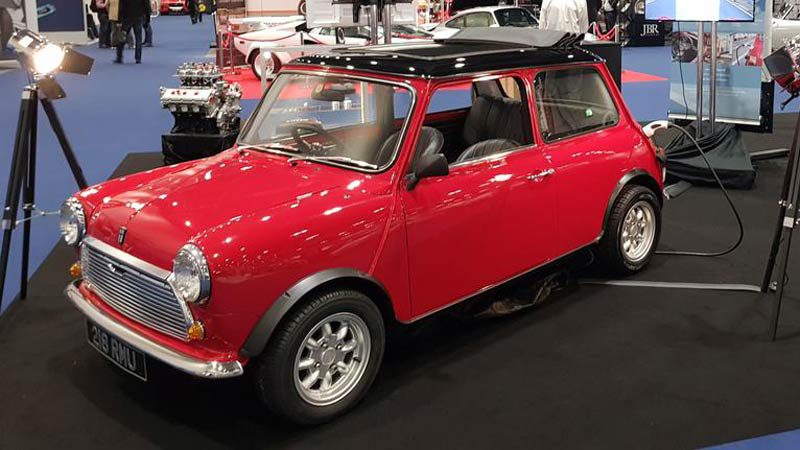A UK company has made what it says is this first ever all-electric Classic Mini, showing it off at the recent London Classic Car Show.
The bright, red, shiny E Classic Mini has been given the new lease on life by Swindon Powertrain, which converted the fully-restored classic car with a custom-made powertrain that was developed by its’ automotive engineering team.
With a 24kWh li-ion battery and single axle motor with 80kW output, the exterior of the zippy little Mini remains the same, while the new powertrain offers a zero emissions driving experience that Swindon Powertrain’s managing director Raphael Caillé says people won’t be able to help falling in love with.
It’s the first time a Classic Mini has gone into production with an EV powertrain – but only 100 lucky buyers will have the opportunity to own one, for a very hefty £79,000 ($A143,000) price tag.
@SWIND_life Electric Classic Mini under the spotlights at London Classic Car Show until Sunday ev. Booth #B80 @LCCS_ldn pic.twitter.com/xmdgU7SgK1
— Raph (@RaphaelCaille) February 15, 2019
“This is the first time an electrified classic Mini has entered production,” Caillé said in a statement.
“There have been one-offs and prototypes before, but Swind is the first company to launch such a car to the public. The classic Mini has such a special place in people’s hearts, not only in the UK but around the world.”
By capitalising on the Mini’s iconic reputation, Swindon Powertrain is putting itself on the EV conversion map, joining the likes of Aston Martin who also announced last year they will “futureproof” their classic vehicles with a “Heritage EV” powertrain.
Classic car/EV enthusiasts with a pocket to match the E Classic Mini’s price tag can be assured that the powertrain is not the only part of the car to be updated; air conditioning, USB ports, and heated leather seats are all now standard features.

A full list of features from Swindon’s website includes:
- Lithium Ion battery containing 24kWh of energy and electric motor producing 80kw of power (the equivalent of 110bhp)
- Fully charged in four hours via a female Type 2 connector (Fast charging option available)
- Range of 125 miles (200km) with regenerative braking system
- Top speed is 80mph (130km/h)
- 0 to 60mph (0-100km/h) in 9.2 seconds
- 30-50mph (50- 80 km/h) acceleration time of 4.3 seconds helps the Mini offer punchy overtaking
- GVW of 720kg (increase of 80kg from starter car)
- Improved weight distribution (57 per cent/43 per cent compared to 68 per cent/32 per cent of the original car)
- With the petrol tank no longer required, boot space is increased to 200 litres
- Standard features include USB charging ports, underfloor heating, heated leather seats and front and rear windscreen
- Options include infotainment and sat-nav system, power steering, a full-length sliding fabric roof, air conditioning, performance tuning packs and bespoke paint colours
- Choice of six standard colours with a contrasting roof
“The packaging of Sir Alec Issigonis’ 1959 design was truly ground-breaking and now we are making it relevant again. Its compact size and good visibility, together with contemporary performance and handling, makes it a car you’ll want to drive in the city and put a smile on your face,” says Caillé.

Bridie Schmidt is associate editor for The Driven, sister site of Renew Economy. She has been writing about electric vehicles since 2018, and has a keen interest in the role that zero-emissions transport has to play in sustainability. She has participated in podcasts such as Download This Show with Marc Fennell and Shirtloads of Science with Karl Kruszelnicki and is co-organiser of the Northern Rivers Electric Vehicle Forum. Bridie also owns a Tesla Model Y and has it available for hire on evee.com.au.

